Key Takeaways
- Upskilling and staying current with industry trends are essential for professionals over 40 to remain competitive in today’s job market.
- Building a strong personal brand and leveraging LinkedIn effectively increases visibility and attracts potential employers.
- Strategic networking and tailoring your job search approach help uncover hidden opportunities suited to your experience and strengths.
In today’s ever-evolving professional landscape, securing employment after the age of 40 can seem like a daunting endeavor, especially in a job market that often prioritizes youthful energy, digital-native skillsets, and fast-paced adaptability.
Yet, the reality is that professionals over 40 bring with them a wealth of invaluable experience, a strong work ethic, and a refined perspective that many employers still deeply value.
Despite the lingering societal myths surrounding age and employability, mature job seekers possess a distinct competitive edge—if they know how to leverage it effectively.

As industries continue to undergo digital transformation and workplace dynamics shift to accommodate remote work, hybrid models, and tech-driven operations, experienced professionals must reframe their career narratives.
Being over 40 is no longer a barrier to success, but rather a gateway to new possibilities—especially when approached strategically. Many organizations are increasingly looking for candidates who can offer leadership, mentorship, stability, and a long-term view—qualities that are more commonly found in seasoned professionals.
However, the path to employment after 40 does come with unique challenges. From overcoming age bias and staying updated with technological trends, to reinventing one’s personal brand and tailoring job search strategies, mature professionals need to approach their job hunt with intention and adaptability. Navigating this stage of a career requires more than just submitting resumes; it involves understanding the modern job market, identifying in-demand skills, and effectively communicating value to potential employers.
This comprehensive guide, “How to Get Hired After 40: Navigating the Job Market as an Experienced Professional,” is designed to empower individuals in their 40s, 50s, and beyond to take proactive steps toward career success. It delves into practical strategies for refining resumes, upgrading skills, optimizing online profiles, leveraging networks, and mastering the interview process. Additionally, it explores alternative career paths such as freelancing, consulting, and entrepreneurship—options that are becoming increasingly viable and rewarding for experienced professionals.
Whether you’re re-entering the workforce after a break, seeking a midlife career pivot, or aiming for advancement in your current field, this blog will help you navigate the complexities of modern hiring practices with confidence. By embracing change, updating your toolkit, and strategically showcasing your experience, you can position yourself not just as a qualified candidate—but as a highly desirable one in a competitive job market.
Now, let’s explore how professionals over 40 can effectively navigate the job search process and unlock the next chapter of their careers with clarity, resilience, and purpose.
Before we venture further into this article, we would like to share who we are and what we do.
About 9cv9
9cv9 is a business tech startup based in Singapore and Asia, with a strong presence all over the world.
With over nine years of startup and business experience, and being highly involved in connecting with thousands of companies and startups, the 9cv9 team has listed some important learning points in this overview of How to Get Hired After 40: Navigating the Job Market as an Experienced Professional.
If your company needs recruitment and headhunting services to hire top-quality employees, you can use 9cv9 headhunting and recruitment services to hire top talents and candidates. Find out more here, or send over an email to [email protected].
Or just post 1 free job posting here at 9cv9 Hiring Portal in under 10 minutes.
How to Get Hired After 40: Navigating the Job Market as an Experienced Professional
- Understanding the Modern Job Market Over 40
- Upskilling and Staying Relevant
- Optimizing Your Resume and Online Presence
- Networking Strategically
- Tailoring Your Job Search Approach
- Acing the Interview as a Seasoned Professional
- Exploring Alternative Career Paths
- Mental Resilience and Positive Mindset
1. Understanding the Modern Job Market Over 40
For professionals over the age of 40, the modern job market presents both unique challenges and significant opportunities. While traditional career trajectories are evolving, there’s a growing recognition of the value experienced professionals bring to the workforce. Understanding the dynamics of today’s employment landscape is essential for mature job seekers to tailor their job search effectively, align with employer expectations, and confidently overcome potential biases.
a. Shifts in Hiring Trends
The job market has undergone radical transformations in recent years—especially following global disruptions such as the COVID-19 pandemic, the rise of artificial intelligence, and the acceleration of digital transformation.
Key Market Shifts Impacting Professionals Over 40:
- Increased Demand for Hybrid and Remote Work:
- Many companies now offer flexible arrangements, which benefit professionals seeking better work-life balance.
- Example: Tech and customer service sectors often offer remote-first roles suitable for experienced professionals.
- Shorter Job Tenure Norms:
- Employers are now more open to candidates with non-linear career paths or shorter stints in previous roles.
- Professionals over 40 can leverage contract, freelance, or consulting roles as stepping stones.
- Focus on Skills Over Degrees:
- Certifications, bootcamps, and demonstrable skills are increasingly valued over traditional education alone.
- Employers prioritize practical expertise, adaptability, and results-driven performance.
- Diversity, Equity & Inclusion (DEI) Initiatives:
- More organizations now include age as part of their diversity hiring strategies.
- Mature candidates can benefit from these inclusive hiring frameworks.
Table: Evolving Hiring Priorities (Before vs. Now)
| Hiring Factor | Traditional Focus (Pre-2000s) | Modern Focus (2020s and Beyond) |
|---|---|---|
| Tenure | Long-term roles | Agility and varied experience |
| Age Preference | Younger candidates | Skills, diversity, experience |
| Education | Formal degrees | Certifications, online learning |
| Work Format | On-site 9-5 roles | Remote, hybrid, flexible |
| Industry Loyalty | Same-industry loyalty | Cross-industry skills welcomed |
b. Ageism in the Workplace: Myth vs. Reality
Age discrimination is a real concern for professionals over 40, but it’s not an insurmountable barrier. Many assumptions about older workers are outdated, and organizations that recognize the value of experience are actively hiring seasoned professionals.
Common Myths About Hiring Workers Over 40:
- Myth: Older workers resist technology.
- Reality: Many professionals over 40 are not only tech-savvy but have adapted through multiple tech revolutions.
- Example: Professionals who transitioned from analog to digital workflows or adopted cloud-based tools in their previous roles.
- Myth: Mature professionals are too expensive.
- Reality: Companies value cost-effective expertise through freelance or project-based work, which many 40+ professionals are open to.
- Myth: They won’t fit into younger teams.
- Reality: Experienced workers often bring mentorship, team cohesion, and leadership that enhance overall performance.
Age-Inclusive Hiring: What to Look For
- Companies with DEI Programs:
- Look for employers with a publicly stated commitment to age diversity.
- Example: Organizations recognized by AARP’s Best Employers for Workers Over 50.
- Job Listings That Emphasize Skills and Values:
- Seek roles that highlight collaboration, leadership, problem-solving, and innovation—rather than just entry-level enthusiasm.
Chart: Perceptions of Older Workers vs. Actual Employer Feedback
| Perception | Employer Reality |
|---|---|
| Struggle with new technologies | Bring deep expertise in adapting to change |
| Resistant to new ideas | Offer practical innovation and risk analysis |
| High cost to hire | Provide high ROI with less need for training |
| Difficult to manage | Require minimal supervision and deliver reliably |
c. Opportunities for Mature Professionals in Emerging Industries
Even in rapidly evolving industries, experienced professionals are finding ample space to contribute, especially in roles that require critical thinking, strategy, and decision-making.
Industries Where Experience is in High Demand:
- Healthcare & Life Sciences
- Roles: Healthcare administration, compliance, data analysis, operations leadership
- Why: Aging populations demand experienced oversight and planning
- Technology
- Roles: Project managers, IT consultants, cybersecurity experts, QA testers
- Why: Many startups value stability and oversight from experienced hands
- Education and EdTech
- Roles: Online educators, curriculum developers, instructional designers
- Why: Lifelong learning requires educators with both teaching and real-world experience
- Finance and Consulting
- Roles: Financial advisors, risk managers, strategic consultants
- Why: Decades of experience offer insights that are difficult to teach or replicate
Table: High-Potential Roles for Professionals Over 40
| Industry | Suggested Roles | Key Skills Required |
|---|---|---|
| Tech | Product Manager, Scrum Master | Agile frameworks, communication |
| Healthcare | Operations Director, Compliance Lead | Regulatory knowledge, leadership |
| Finance | Financial Planner, Risk Analyst | Forecasting, critical thinking |
| Education | Online Instructor, Content Developer | Communication, LMS tools |
| Nonprofit | Program Manager, Grant Coordinator | Fundraising, stakeholder engagement |
d. Embracing Career Transitions After 40
Many professionals over 40 are choosing to pivot careers, driven by passion, necessity, or opportunity. This shift is becoming more normalized and widely accepted across industries.
Transition-Friendly Career Paths:
- Corporate to Consulting:
- Use decades of expertise to advise startups or small businesses.
- Tech Upskilling:
- Learn in-demand tech skills (e.g., Python, cloud computing) through intensive bootcamps.
- Remote and Freelance Work:
- Explore marketplaces like Upwork or Toptal to monetize your skills independently.
- Entrepreneurship:
- Launch a small business or leverage personal branding to build an online consultancy.
Understanding these modern market dynamics helps professionals over 40 not only prepare for the job search but strategically position themselves as essential assets in a rapidly changing world. In the sections that follow, this guide will offer practical steps to build relevant skills, rebrand professionally, and communicate value in a competitive hiring environment.
2. Upskilling and Staying Relevant
In the competitive and technology-driven job market of today, one of the most crucial steps for professionals over 40 is continuous upskilling. As industries evolve and employers demand updated competencies, staying relevant is no longer optional—it is essential. Fortunately, with a strategic learning plan, seasoned professionals can bridge skill gaps, reinforce their market value, and align their experience with current trends.
This section explores how mature professionals can identify skill gaps, select the right learning methods, and leverage certifications and tech fluency to enhance employability.
a. Why Upskilling Matters After 40
Keeping pace with industry evolution is vital to overcoming age-related stereotypes and improving job market competitiveness.
Key Reasons for Upskilling:
- Demonstrates adaptability and willingness to grow
- Employers value candidates who actively seek self-improvement.
- Bridges the gap between experience and current technology
- Tech tools, platforms, and methodologies evolve rapidly; staying updated shows you’re aligned with modern workflows.
- Increases confidence in job interviews and role transitions
- Gaining new skills boosts self-assurance and credibility.
- Positions you for promotion, career shifts, or consulting
- Professionals who upskill can transition into high-demand roles or start their own ventures.
b. Identifying the Right Skills to Learn
Not all skills are created equal. Focused learning on in-demand and transferable skills is key to maximizing the return on your time and investment.
How to Identify What to Learn:
- Assess Job Descriptions in Your Target Field:
- Look for frequently listed tools, platforms, and skill requirements.
- Conduct a Skills Gap Analysis:
- Compare your current abilities with industry expectations to spot gaps.
- Consult With Recruiters or Career Coaches:
- Gain personalized insights into which skills will enhance your job prospects.
Top Skills in Demand Across Industries:
| Category | In-Demand Skills |
|---|---|
| Digital Literacy | Microsoft 365, Google Workspace, Zoom |
| Data & Analytics | Excel (Advanced), Power BI, SQL, Tableau |
| Project Management | Agile, Scrum, Trello, Asana, PMP Certification |
| Marketing | SEO, Google Ads, Social Media Strategy |
| IT & Tech | Cybersecurity, Cloud (AWS, Azure), Python |
| Communication | Business writing, public speaking, negotiation |
c. Best Learning Platforms for Professionals Over 40
Online learning has revolutionized how professionals acquire new knowledge. Flexible, affordable, and self-paced, digital platforms offer an excellent path for mature learners.
Recommended Learning Platforms:
| Platform | Best For | Certifications Available |
|---|---|---|
| Coursera | University-level courses in tech, business | Yes (from top universities) |
| Udemy | Affordable skill-specific courses | Certificate of completion |
| LinkedIn Learning | Professional development, leadership | Yes (badge on LinkedIn profile) |
| edX | Academic programs from global institutions | Yes (verified certificates) |
| Skillshare | Creative and marketing skills | No formal certification |
| Google Career Certificates | Tech-focused job training | Yes (recognized by employers) |
Tips for Maximizing Online Learning:
- Choose instructor-led courses with high ratings and reviews
- Set a weekly schedule to stay consistent
- Join course discussion forums to build networks
- Apply what you learn through projects or freelance work
d. Gaining Industry Certifications
Certifications are powerful credentials that validate your expertise and can significantly improve your chances of being shortlisted by employers.
Benefits of Industry-Recognized Certifications:
- Boosts resume credibility and job prospects
- Opens doors to higher-paying roles
- Provides specialization in niche areas
Table: Popular Certifications by Industry
| Industry | Certifications | Duration |
|---|---|---|
| Project Management | PMP, PRINCE2, Agile Certified Practitioner | 1–6 months |
| IT & Cybersecurity | CompTIA+, CISSP, AWS, Google IT Support | 2–12 months |
| Marketing | HubSpot, Google Ads, Facebook Blueprint | 1–3 months |
| Data Analysis | Microsoft Excel Expert, DataCamp, IBM Data Analyst | 2–6 months |
| HR | SHRM-CP, PHR, LinkedIn Talent Solutions | 3–6 months |
e. Embracing Tech Fluency: A Key Differentiator
Digital proficiency is no longer exclusive to younger professionals. In fact, tech-fluent individuals over 40 are often seen as highly capable leaders in today’s workplace.
Key Digital Tools and Platforms to Learn:
- Collaboration & Communication Tools:
- Zoom, Slack, Microsoft Teams
- Project & Workflow Tools:
- Trello, Monday.com, Notion, Jira
- Cloud Platforms:
- Google Drive, Dropbox, SharePoint
- Data Tools:
- Excel (Advanced), Google Sheets, Tableau
- AI & Automation:
- ChatGPT, Zapier, Grammarly, AI productivity tools
Example Use Case:
A marketing professional over 40 learns Google Analytics, HubSpot, and Canva to pivot into a digital marketing strategist role, significantly expanding their career options.
f. Soft Skills: The Competitive Edge
While technical skills matter, employers also prioritize candidates with refined soft skills, which are often a strength for older professionals.
Most Valuable Soft Skills for Professionals Over 40:
- Emotional Intelligence (EQ):
- Understanding team dynamics, mentoring younger staff, handling conflict
- Leadership and Team Management:
- Guiding cross-functional teams, delivering results under pressure
- Adaptability:
- Embracing change, pivoting roles, learning new tools
- Problem Solving and Critical Thinking:
- Drawing from real-world experiences to find effective solutions
g. Tracking Your Progress and Showcasing Growth
It’s important to document and reflect on your upskilling journey. This reinforces personal growth and demonstrates your commitment to staying competitive.
How to Showcase Upskilling:
- Update Your LinkedIn Profile:
- Add certifications, skill endorsements, and projects
- Revise Your Resume:
- Include new tools, technologies, and training under the skills section
- Build a Portfolio or Personal Website:
- Display projects, case studies, blogs, or video presentations
- Use Metrics:
- Quantify the impact of your learning (e.g., “Increased email engagement by 25% using Mailchimp automation”)
Upskilling is not just a tactic for landing a new job—it’s a mindset of continuous improvement. For professionals over 40, acquiring new knowledge and adapting to modern tools can be a game-changer. It reaffirms your place in the workforce, aligns your experience with contemporary needs, and opens new doors to rewarding opportunities.
3. Optimizing Your Resume and Online Presence
For professionals over 40, making a powerful impression starts with a well-optimized resume and a compelling digital footprint. Hiring managers often rely on applicant tracking systems (ATS) and online platforms like LinkedIn to screen candidates long before a phone call is made. This means your resume and online presence must communicate clarity, relevance, and up-to-date skills while showcasing your years of experience as a competitive advantage—not a liability.
This section explores how experienced professionals can craft age-proof resumes and build a strong digital presence that aligns with modern hiring practices.
a. Resume Optimization Strategies for Experienced Professionals
Focus on Relevance Over Chronology
- Trim career history to the last 10–15 years
- Avoid listing roles from the 1980s or 1990s unless they are highly relevant.
- Use a brief “Earlier Career Summary” to mention older experience without excessive detail.
- Customize your resume for each job application
- Include keywords from the job description to get past ATS filters.
- Highlight only the most relevant accomplishments and skills.
- Choose a modern, clean format
- Use contemporary fonts (e.g., Calibri, Arial, Helvetica) and a professional layout.
- Avoid outdated formats like objective statements or excessive bulleting.
Use a Compelling Summary Section
- Craft a results-driven professional summary at the top
- Example:
“Versatile marketing strategist with 18+ years of experience driving growth in B2B tech environments. Proven ability to lead cross-functional teams, manage $1M+ campaigns, and increase brand visibility through data-driven decisions.”
- Example:
- Focus on achievements over duties
- Use metrics and outcomes (e.g., “Increased sales revenue by 32% in 12 months”).
b. Tailoring Content for ATS and Recruiters
Incorporate Industry-Specific Keywords
- Identify keywords from job postings
- Use terms like “project management,” “cloud computing,” or “customer engagement” depending on your industry.
- Strategically place keywords in:
- Job titles
- Skill sections
- Summary and achievement bullets
Use ATS-Friendly File Formats
- Best Practices:
- Save resumes in
.docxor.pdf(only if specified) - Avoid using tables, headers/footers, and graphics that ATS systems may not parse
- Save resumes in
Common ATS-Friendly Resume Sections:
| Section | Purpose |
|---|---|
| Header | Full name, phone number, email, LinkedIn profile link |
| Summary | Value proposition and core qualifications |
| Key Skills | Highlight 10–15 industry-specific skills for quick ATS scanning |
| Work Experience | Job title, company, location, dates, and bullet-point achievements |
| Certifications/Training | Include only recent and relevant certifications |
| Education | Focus on degrees, omit graduation years if over 20 years old |
c. Showcasing Transferable and Tech Skills
Highlight skills that prove you’re current with industry trends and can adapt to modern work environments.
Examples of Transferable Skills:
- Leadership and team management
- Strategic planning and execution
- Client relations and stakeholder engagement
- Change management and process improvement
- Budgeting and financial oversight
Examples of Technical Competencies to List:
- Digital Tools: Salesforce, Zoom, Trello, Google Analytics
- Productivity Platforms: Microsoft 365, Google Workspace
- Industry-Specific Software: SAP, QuickBooks, AutoCAD
- Marketing & Social Media: Canva, Mailchimp, LinkedIn Ads
- Data Analysis: Excel (Advanced), Tableau, SQL
d. Refreshing and Leveraging Your LinkedIn Profile
LinkedIn is your digital business card. Recruiters routinely use it to assess credibility, gauge culture fit, and uncover passive candidates.
Optimize Your LinkedIn Profile with These Steps:
- Professional Headshot
- Choose a clear, friendly, and high-resolution image with a neutral background.
- Headline That Highlights Value
- Example:
“Senior Project Manager | Agile & Scrum Certified | Delivering Multimillion-Dollar Solutions Across Global Teams”
- Example:
- Write a Compelling ‘About’ Section
- Focus on your passion, career highlights, and future goals in 3–5 short paragraphs.
- Feature Rich Media
- Add portfolios, presentations, or project case studies to your profile.
- Build a Strong Skills & Endorsements Section
- Include both hard and soft skills—make sure your top skills align with your resume.
LinkedIn Profile Example Layout:
| Section | Example Content |
|---|---|
| Headline | “Experienced HR Leader |
| About | “With 20+ years of building inclusive teams and scalable hiring frameworks…” |
| Experience | Bullet-point accomplishments, similar to resume |
| Skills | Talent Management, Employee Engagement, DEI Strategy, HRIS |
| Recommendations | At least 2 from colleagues, managers, or clients |
e. Building an Online Presence Beyond LinkedIn
While LinkedIn is crucial, a broader professional footprint can enhance credibility and showcase thought leadership.
Additional Platforms to Consider:
- Personal Portfolio Website
- Ideal for marketing, design, writing, or tech professionals to display work samples.
- Professional Blogs or Guest Articles
- Share industry insights on platforms like Medium, WordPress, or company blogs.
- Speaking Engagements or Webinars
- Highlight these on your LinkedIn or personal website.
- GitHub (for tech professionals)
- Showcase code samples and collaborative projects.
- Behance or Dribbble (for creatives)
- Present visual design, UX, or branding work in an organized portfolio.
f. Managing Digital Reputation and Searchability
Recruiters often Google candidates before interviews, so it’s essential to curate a clean, professional online presence.
Key Steps for Online Reputation Management:
- Google Yourself
- See what employers will find—adjust privacy settings or remove outdated content.
- Update Social Media Bios
- Align Twitter, Instagram, or Facebook profiles with your professional brand if public.
- Monitor Mentions and Tags
- Set up Google Alerts for your name or brand to track online mentions.
- Consistent Naming Conventions
- Use the same name format (e.g., John A. Smith) across all platforms for SEO benefits.
g. Summary Chart: Resume vs. Online Presence Optimization Checklist
| Element | Resume | Online Presence |
|---|---|---|
| Format | ATS-optimized, clean layout | Responsive, professional profiles |
| Summary | Results-driven profile | Engaging “About” section |
| Skills | Industry-specific, keyword-rich | Endorsed by peers on LinkedIn |
| Experience | Metrics and impact-focused | Aligned with resume, interactive |
| Certifications | Listed under skills or education | Featured as badges or highlights |
| Portfolio/Media | Linked via resume or URL | Hosted on LinkedIn or personal site |
| Contact Information | Phone, email, LinkedIn URL | Clickable contact buttons |
| Updates & Consistency | Tailored to each job | Consistent across all platforms |
Optimizing your resume and online presence is about creating a consistent and compelling narrative that speaks directly to today’s recruiters. For professionals over 40, it’s an opportunity to leverage both experience and modern relevance—presented in a format that passes digital filters and impresses human decision-makers alike. With the right structure, message, and platforms, you can build a professional identity that resonates in a digital-first hiring landscape.
4. Networking Strategically
Strategic networking is one of the most vital components of a successful job search, particularly for professionals over 40. In today’s job market, where up to 80% of jobs are filled through networking rather than online applications, building and leveraging professional relationships can significantly enhance your chances of securing interviews and job offers. This section outlines effective strategies for establishing, nurturing, and utilizing a network to your advantage as an experienced professional.
a. Understanding the Power of Strategic Networking
Why Networking is Essential Over 40:
- Access to the hidden job market
- Many senior-level and specialized roles are never advertised publicly.
- Referrals lead to faster hires
- According to LinkedIn, job candidates are 4x more likely to be hired when referred.
- Trust and credibility
- Referrals from trusted connections carry more weight with employers.
Key Networking Statistics:
| Networking Insight | Percentage/Impact |
|---|---|
| Jobs found through networking | 70–80% |
| Recruiters who use LinkedIn to vet candidates | Over 90% |
| Job seekers who land roles via employee referrals | 1 in 5, compared to 1 in 152 through job boards |
b. Building and Expanding Your Network
Start with Your Existing Contacts
- Former colleagues, managers, and clients
- Reach out with a personalized message or catch-up call.
- Example: “I’m exploring new opportunities and would value your insights or referrals.”
- Friends and family
- Let them know your goals—many job opportunities arise through indirect connections.
- Professional associations and alumni networks
- Join alumni groups on LinkedIn or participate in university events.
Attend Industry Events and Virtual Meetups
- Conferences, trade shows, and webinars
- Engage with speakers or panelists after sessions.
- Use networking platforms like Meetup, Eventbrite, and Clubhouse.
- Local chambers of commerce or industry roundtables
- Ideal for connecting with regional business leaders.
c. Leveraging LinkedIn for Networking Success
Optimize Your Profile for Networking
- Professional photo, headline, and detailed experience
- Focus on achievements and key skills relevant to your target roles.
- Custom URL and visible contact info
- Make it easy for people to connect and follow up.
Engage with Your Network Actively
- Comment on and share relevant posts
- Adds visibility and builds thought leadership.
- Send personalized connection requests
- Example: “Hi Mark, I noticed we both work in supply chain optimization. I’d love to connect and share insights.”
- Use LinkedIn’s “Open to Work” feature discreetly
- Visible only to recruiters if preferred.
LinkedIn Networking Tactics Table:
| Action | Purpose | Frequency |
|---|---|---|
| Send personalized invites | Initiate new connections | 5–10 per week |
| Post/share relevant content | Demonstrate expertise | 2–3 times weekly |
| Endorse skills and write recs | Build reciprocity and visibility | Bi-weekly/monthly |
| Participate in groups | Join niche discussions and communities | Weekly |
d. Engaging in Informational Interviews
Informational interviews are low-pressure conversations that help you learn about industries, roles, and companies—while planting seeds for potential referrals.
How to Set Them Up:
- Reach out to a contact in your desired field
- Example: “I admire your work at [Company]. I’m exploring similar roles and would love to hear about your career path.”
- Prepare focused questions:
- “What skills are most valued in your team?”
- “How did you transition into this role from your previous position?”
- Follow up with a thank-you message
- Express appreciation and summarize key takeaways.
Benefits of Informational Interviews:
- Provides insights into unadvertised openings
- Helps clarify your job target
- Can lead to referrals or mentorship opportunities
e. Joining Professional Organizations and Industry Groups
Membership Benefits:
- Networking with peers and decision-makers
- Example: Joining the American Marketing Association (AMA) for marketers.
- Access to job boards and exclusive hiring events
- Many associations offer member-only opportunities.
- Skill-building and credentialing
- Earn industry-recognized certificates and attend workshops.
Examples of Professional Associations:
| Industry | Association | Benefit |
|---|---|---|
| Marketing | American Marketing Association (AMA) | Events, certifications, peer networking |
| Finance | CFA Institute, AICPA | Training, conferences, thought leadership |
| IT/Tech | CompTIA, IEEE, ISACA | Global networking and continuous learning |
| Human Resources | SHRM (Society for Human Resource Management) | Career center, webinars, networking events |
| Supply Chain/Logistics | CSCMP (Council of Supply Chain Management) | Mentorship, forums, annual conferences |
f. Giving Value Before Asking for Help
Building long-term, meaningful relationships requires offering value first.
Ways to Give Value in Networking:
- Share relevant industry articles or tools
- Demonstrates thoughtfulness and engagement.
- Introduce mutual connections
- Facilitate opportunities for others before asking for help.
- Congratulate peers on promotions, awards, or achievements
- Strengthens connections organically.
- Volunteer or speak at community or professional events
- Builds credibility and visibility in your field.
g. Tracking and Managing Your Networking Efforts
Organize your outreach efforts for consistency and effectiveness.
Use a Networking Tracker
| Contact Name | Organization | Last Contact Date | Follow-Up Date | Notes |
|---|---|---|---|---|
| Sarah J. | IBM | May 10, 2025 | May 25, 2025 | Offered to connect with HR |
| Tom R. | Deloitte | May 8, 2025 | May 22, 2025 | Shared insights on analytics role |
| Karen M. | AMA Chapter | May 1, 2025 | May 30, 2025 | Invited to local meetup |
Tools for Networking Management:
- CRM-style tools: Trello, Airtable, Notion
- Google Sheets/Excel: Simple and customizable
- LinkedIn Tags and Notes: Use “Connections” tab to sort by industry or function
h. Summary: Strategic Networking Pillars for Professionals Over 40
| Networking Pillar | Description |
|---|---|
| Reconnect with known contacts | Leverage former colleagues, managers, clients |
| Expand through associations | Join industry-specific groups and alumni networks |
| Maximize LinkedIn potential | Build credibility and visibility with an optimized profile |
| Conduct informational interviews | Learn, connect, and uncover hidden opportunities |
| Be a giver, not just a taker | Share value and help others before making requests |
| Track outreach systematically | Stay consistent and follow up purposefully |
Strategic networking is not about quantity—it’s about meaningful, mutual relationships that lead to shared opportunities. For professionals over 40, leveraging wisdom, experience, and relevance within a targeted network can open doors faster than job boards ever could. By building genuine connections, maintaining a strong digital presence, and consistently giving value, you position yourself as a trusted and referable candidate in today’s competitive job landscape.
5. Tailoring Your Job Search Approach
A one-size-fits-all job search approach no longer works—especially for professionals over 40 navigating a rapidly evolving and competitive employment landscape. Instead, job seekers must adopt a personalized, strategic, and tech-savvy approach that aligns with their skills, career goals, and industry trends. By tailoring every step of your job search—from identifying suitable roles to customizing your resume and leveraging specialized recruitment platforms like 9cv9 Job Portal and the 9cv9 Recruitment Agency—you dramatically improve your chances of landing a fulfilling role that values your experience.
a. Clarify Your Career Goals and Target Market
Before applying, define what you truly want in your next role.
Identify Your Ideal Job Profile
- Assess your core strengths, passions, and transferable skills
- Example: A 45-year-old operations manager may transition into business process consulting or supply chain strategy.
- Determine industry focus based on demand and relevance
- Healthcare, IT, EdTech, and FinTech are rapidly expanding sectors with opportunities for seasoned professionals.
- Set your job search criteria
- Full-time vs. part-time, remote vs. hybrid, corporate vs. startup, salary expectations, and location preferences.
Career Mapping Template
| Category | Preferred Option #1 | Preferred Option #2 | Final Decision |
|---|---|---|---|
| Industry | FinTech | Healthcare | FinTech |
| Role Type | Project Manager | Business Analyst | Project Manager |
| Work Style | Remote | Hybrid | Remote |
| Salary Range | $80,000–$100,000 | $100,000–$120,000 | $90,000–$110,000 |
| Company Culture | Collaborative | Innovation-focused | Collaborative |
b. Research and Prioritize Age-Inclusive Employers
Professionals over 40 should focus on companies known for valuing experience, promoting diversity, and encouraging multi-generational teams.
How to Identify the Right Employers
- Use platforms like Glassdoor, Indeed, and LinkedIn
- Search for company reviews that mention diversity, work-life balance, and age-inclusivity.
- Explore opportunities on the 9cv9 Job Portal
- The 9cv9 Job Portal connects job seekers to vetted employers that often value maturity, leadership, and mentorship.
- Reach out to the 9cv9 Recruitment Agency
- Leverage 9cv9’s experienced recruiters to match you with roles that suit your background and goals.
Top Age-Inclusive Traits to Look for
| Employer Trait | Benefit for 40+ Professionals |
|---|---|
| Emphasis on DEI initiatives | Encourages age and experience diversity |
| Clear professional development | Opportunities for upskilling and advancement |
| Flexible work arrangements | Accommodates personal commitments and lifestyle needs |
| Multi-generational workforce | Allows seasoned professionals to mentor and lead effectively |
c. Utilize Specialized Platforms Like 9cv9 for Job Applications
Generic job boards are saturated. Instead, use specialized platforms designed to match you with opportunities based on your expertise and preferences.
Benefits of Using the 9cv9 Job Portal
- Targeted job listings in Southeast Asia and beyond
- Especially useful for professionals seeking cross-border or remote opportunities.
- AI-driven job matching
- Connects you with roles that align with your background and desired career path.
- Resume visibility to employers actively seeking experienced talent
- Companies on 9cv9 often seek mid-level to senior-level professionals for high-impact roles.
Chart: Comparison of Job Search Platforms
| Platform | Strengths for 40+ Professionals | Recommended Use |
|---|---|---|
| 9cv9 Job Portal | Age-inclusive, experience-focused, recruiter access | Primary portal for targeted job search |
| Networking, thought leadership, referrals | Professional branding and outreach | |
| Indeed | Volume of listings, keyword filtering | General job search |
| FlexJobs | Flexible and remote positions | For career changers seeking flexibility |
d. Customize Your Resume and Cover Letter for Every Application
Tailoring your application materials ensures they resonate with hiring managers and beat applicant tracking systems (ATS).
Resume Customization Tips
- Highlight recent and relevant achievements
- Focus on the past 10–15 years of experience; use metrics and outcomes.
- Example: “Reduced operational costs by 20% through strategic vendor consolidation.”
- Incorporate industry-specific keywords from the job description
- Align your language with what employers are searching for in resumes.
- Keep the layout clean and ATS-friendly
- Avoid tables, graphics, or overly designed formats.
Cover Letter Strategy
- Personalize the greeting and refer to the company or role by name
- Briefly mention why you’re interested in the position and how your experience aligns
- Demonstrate enthusiasm, leadership, and readiness to contribute immediately
e. Engage with Recruitment Experts Like 9cv9 Agency
Recruitment agencies often have access to exclusive roles not posted publicly.
How 9cv9 Recruitment Agency Supports Professionals Over 40
- Provides one-on-one career consultation
- Helps align your goals with the market’s current needs.
- Recommends roles based on skillset, not age
- Their recruiters focus on matching you with companies seeking maturity and leadership.
- Offers coaching for interviews and resume optimization
- Increases your confidence and readiness for high-level roles.
Example:
A 46-year-old finance executive used 9cv9’s services to transition from a multinational bank to a FinTech startup as a Head of Compliance, leveraging her two decades of regulatory experience.
f. Apply Smartly and Track Your Progress
Random mass applications don’t work. Apply selectively and monitor your results.
Smart Application Strategy
- Apply to 5–10 well-matched roles per week
- Prioritize companies and roles that align with your top criteria
- Use a job search tracker to manage follow-ups, interview dates, and outcomes
Job Search Tracker Template
| Date Applied | Company | Role Applied For | Source (9cv9, LinkedIn, etc.) | Response Status | Follow-up Date |
|---|---|---|---|---|---|
| May 1, 2025 | ABC Co. | Senior Project Manager | 9cv9 Job Portal | Interview Scheduled | May 10, 2025 |
| May 2, 2025 | XYZ Inc. | Business Analyst | Awaiting Response | May 9, 2025 |
g. Tailor Your Approach for Remote, Contract, and Consulting Roles
Professionals over 40 can benefit from the flexibility and autonomy of non-traditional roles.
Types of Roles to Explore
- Remote employment in tech, finance, HR, or marketing
- Short-term contracts and project-based roles
- Consulting for startups or SMEs needing experienced insights
Advantages for Mid-Career Professionals
- Ability to control your schedule and workload
- Leverage your experience in high-impact, advisory capacities
- Enter new industries or functions without long-term commitment
h. Summary: Key Elements of a Tailored Job Search Strategy After 40
| Strategy Element | Action Step |
|---|---|
| Define goals and direction | Identify target roles, industries, and work arrangements |
| Use specialized platforms | Leverage 9cv9 Job Portal for curated listings and recruiter access |
| Customize applications | Tailor resume and cover letter for each opportunity |
| Collaborate with experts | Work with 9cv9 Recruitment Agency to access hidden opportunities |
| Track and refine strategy | Use a tracker to manage progress and adjust tactics as needed |
| Stay open and agile | Explore remote, contract, or consulting work for added flexibility |
Tailoring your job search approach after 40 is about aligning your vast experience with the evolving demands of the job market. By defining clear goals, leveraging age-inclusive platforms like 9cv9 Job Portal, and collaborating with recruitment experts at 9cv9 Recruitment Agency, you can unlock new opportunities that match your skills, values, and lifestyle. This strategic, personalized approach not only enhances your chances of landing the right job—it empowers you to thrive in a career that continues to grow and evolve with you.
6. Acing the Interview as a Seasoned Professional
The interview stage is where seasoned professionals can truly shine—if approached with the right preparation, mindset, and strategy. Hiring managers today look for individuals who can contribute immediately, lead with confidence, and align with modern team dynamics. However, candidates over 40 may encounter misconceptions about adaptability, energy levels, or tech-savviness. This section provides an in-depth and SEO-optimised guide to help experienced professionals not only overcome such stereotypes but also stand out as high-value candidates.
a. Preparing for Common Interview Questions for Experienced Candidates
Understand What Interviewers Are Really Asking
- Tell me about yourself
- Focus on a career narrative that highlights experience, achievements, and adaptability.
- Example: “With 20+ years in operations and project management, I’ve consistently delivered cost-saving solutions while embracing new technologies like Agile and cloud-based systems.”
- Why are you seeking a new role now?
- Emphasize growth, contribution, and the desire to work in a collaborative environment—not dissatisfaction or redundancy.
- Example: “I’m excited to transition into a company where I can apply my expertise in streamlining systems while also mentoring the next generation of leaders.”
- How do you stay current with industry trends?
- Mention certifications, webinars, podcasts, LinkedIn learning, or memberships in professional associations.
- Example: “I recently completed a data analytics certification from Coursera and follow Harvard Business Review and McKinsey Insights regularly.”
Table: Common Questions and Strategic Responses
| Interview Question | Strategic Response Example |
|---|---|
| What motivates you at this stage in your career? | “Solving complex challenges and mentoring younger professionals.” |
| Are you comfortable reporting to someone younger? | “Absolutely, I value diverse perspectives and focus on shared goals.” |
| Can you adapt to fast-changing environments? | “Yes, I’ve led transitions to new CRMs and Agile workflows.” |
b. Highlighting the Right Strengths as a Mature Candidate
Showcase Relevant Experience Without Overwhelming Detail
- Focus on recent and relevant accomplishments
- Avoid listing every job from 20+ years ago.
- Example: “In my most recent role, I reduced delivery delays by 32% through system automation.”
- Quantify impact wherever possible
- Use metrics to show results: cost savings, process improvements, team growth.
- Emphasize leadership, resilience, and critical thinking
- Especially for roles requiring problem-solving or team management.
Highlight Soft Skills in High Demand
| Soft Skill | Why It’s Valued in 2024 Job Market |
|---|---|
| Emotional Intelligence | Helps manage teams and conflict resolution |
| Mentorship | Supports younger team development |
| Change Management | Critical in digital transformation initiatives |
| Strategic Vision | Contributes to long-term planning and sustainability |
c. Addressing Age Bias Proactively
Dispel Myths Through Confidence and Adaptability
- Reframe age as experience
- Example: “My career has given me the tools to remain calm under pressure and deliver results on tight deadlines.”
- Demonstrate openness to new tools and methods
- Mention recent learning experiences or collaboration with diverse teams.
- Show enthusiasm and future focus
- Use positive, forward-looking language such as “growth,” “new challenges,” and “building teams.”
Example Phrases to Use During the Interview
| Misconception | Reframing Statement Example |
|---|---|
| Set in your ways | “I thrive in dynamic settings and welcome fresh perspectives.” |
| Overqualified | “I’m focused on delivering value and growth in this exact role.” |
| Won’t stay long | “I’m committed to long-term contributions and team success.” |
d. Mastering Modern Interview Formats
Virtual Interview Preparation
- Test your technology in advance
- Check lighting, sound, background, and internet stability.
- Dress professionally for video
- Business attire with neutral tones helps create a confident impression.
- Use eye contact and clear body language
- Look at the camera, not the screen.
In-Person Interview Tips
- Bring printed resumes and a portfolio (if relevant)
- Ensure documents are tailored to the job.
- Maintain strong but friendly body language
- A firm handshake, direct eye contact, and open posture are key.
| Interview Type | Preparation Focus |
|---|---|
| Zoom/Virtual | Tech setup, background, posture, digital documents |
| In-Person | Body language, physical copies, route planning |
| Panel Interviews | Address each panelist, prepare cross-functional answers |
| Case Study/Project | Practice frameworks, present structured solutions |
e. Leveraging STAR Method for Storytelling
Structure Your Answers for Maximum Impact
- S – Situation: Set the context of your example.
- T – Task: Explain the challenge or responsibility.
- A – Action: Describe what you did.
- R – Result: Share the outcome and quantifiable impact.
STAR Example:
Question: “Tell us about a time you led a team under pressure.”
- Situation: “Our software launch was delayed due to unexpected API integration issues.”
- Task: “As the project lead, I had to ensure we launched within the fiscal quarter.”
- Action: “I reallocated team resources, brought in a third-party consultant, and held daily stand-ups to monitor progress.”
- Result: “We launched successfully two days before the deadline, achieving 100% stakeholder satisfaction.”
f. Asking Strategic Questions During the Interview
Questions That Signal Experience and Engagement
- “What are the biggest challenges the team is currently facing?”
- “How would you describe the leadership style of this department?”
- “What would success in this role look like in the first 6 months?”
- “How does this company invest in professional development for its employees?”
Why These Questions Work
- Show critical thinking and strategic perspective.
- Demonstrate genuine interest in the company’s challenges and success.
- Allow you to assess culture, leadership, and advancement opportunities.
g. Following Up Professionally
Send a Thoughtful Thank-You Email
- Within 24 hours of the interview
- Personalize it based on your conversation
- Mention specific discussion points or shared goals.
- Reiterate interest and why you’re a strong fit.
Thank-You Email Example:
Subject: Thank You – Senior Operations Manager Interview
Dear [Interviewer’s Name],
Thank you for the opportunity to speak with you about the Senior Operations Manager position. I appreciated our discussion about [mention topic], and I’m enthusiastic about the possibility of contributing to [Company Name]’s continued success.
My experience with streamlining logistics operations and leading cross-functional teams aligns closely with your department’s goals. I’m particularly excited about the opportunity to [mention specific initiative discussed].
Please don’t hesitate to reach out if you need additional information. I look forward to the next steps.
Best regards,
[Your Name]
h. Summary: Keys to Acing the Interview Over 40
| Key Area | Best Practices |
|---|---|
| Preparation | Anticipate age-related questions and prepare confident answers |
| Showcasing Experience | Focus on recent, relevant results with quantifiable achievements |
| Addressing Age Bias | Emphasize adaptability, mentorship, and forward-thinking |
| Storytelling | Use the STAR method to give structured, impactful answers |
| Interview Etiquette | Adapt to both virtual and in-person formats professionally |
| Follow-Up | Send a tailored, thoughtful thank-you note within 24 hours |
Seasoned professionals possess a wealth of experience and insights that employers deeply value—if articulated effectively. By mastering modern interview techniques, highlighting relevant strengths, and confidently addressing common concerns, job seekers over 40 can turn their interviews into powerful opportunities to demonstrate leadership, relevance, and long-term potential.
7. Exploring Alternative Career Paths
In today’s rapidly evolving employment landscape, professionals over 40 are increasingly seeking new and fulfilling ways to redefine their careers. Whether driven by industry shifts, a desire for better work-life balance, or personal fulfillment, exploring alternative career paths offers seasoned professionals the opportunity to leverage their transferable skills in fresh, high-demand roles. This comprehensive section provides SEO-optimized guidance on how experienced individuals can pivot, upskill, and explore new directions in their professional journey after 40.
a. Why Consider an Alternative Career Path After 40?
Common Motivations for Career Change
- Industry disruption or decline
- Example: Professionals in print media moving into digital marketing or content strategy.
- Desire for flexibility or remote work
- Shift toward careers that allow location independence (e.g., freelance writing, virtual assistance).
- Seeking personal fulfillment
- Professionals moving from corporate roles to nonprofit or educational sectors.
- Health or lifestyle considerations
- Shifting from high-stress environments to wellness or coaching professions.
Benefits of a Midlife Career Pivot
- Ability to apply years of experience in new contexts
- Increased job satisfaction and alignment with personal values
- Enhanced work-life balance and autonomy
- New learning opportunities and mental stimulation
b. Identifying Transferable Skills and Interests
Key Transferable Skills for Career Transitions
| Skill Set | Applicable New Career Paths |
|---|---|
| Project Management | IT implementation, nonprofit administration, freelancing |
| Leadership & Communication | Teaching, coaching, consulting, HR |
| Financial Acumen | Bookkeeping, financial planning, grant writing |
| Analytical Thinking | Data analysis, research, UX design |
| Customer Service | Account management, user support, client success roles |
Actionable Steps to Discover New Career Paths
- Conduct a personal skills audit
- List core competencies and match them to emerging industries.
- Take online assessments
- Use tools like Myers-Briggs, CliftonStrengths, or Holland Codes to identify interest areas.
- Network with professionals in other industries
- Set informational interviews to understand other career landscapes.
c. Popular Alternative Career Paths for Professionals Over 40
1. Freelancing and Consulting
- Best for: Those with deep industry knowledge and client networks
- Roles: Marketing consultant, HR advisor, IT project consultant
- Benefits:
- Flexibility in scheduling
- High income potential
- Autonomy and selective project choices
2. Education and Training
- Best for: Strong communicators who enjoy mentoring
- Roles: Corporate trainer, adult education instructor, tutor
- Benefits:
- Rewarding work and job security
- Clear career paths and certifications available
3. Tech and Digital Careers
- Best for: Analytical thinkers open to upskilling
- Roles: UX designer, digital marketer, data analyst
- Examples:
- A former sales manager retrains via Google UX Design Certificate and becomes a UX researcher.
4. Healthcare and Wellness
- Best for: Empathetic individuals with interest in health or fitness
- Roles: Medical coding, physical therapy aide, wellness coach
- Benefits:
- Growing sector with stable demand
- Opportunities to gain certification in under 12 months
5. Entrepreneurship and Franchising
- Best for: Independent professionals with leadership skills
- Paths: Opening a franchise, launching an online business, consulting firm
- Example:
- A former executive opens a home care franchise targeting aging populations.
d. Steps to Successfully Transition into a New Career
Self-Assessment and Planning
- Define your “why” — understand your motivation for change
- Set realistic expectations for salary, training, and timelines
- Build a financial cushion to manage the transition period
Education and Certification
| New Career Path | Recommended Courses/Certifications |
|---|---|
| UX Design | Google UX Design Certificate, Coursera |
| Life Coaching | International Coaching Federation (ICF) Certification |
| Project Management | PMP, CAPM, or Agile certifications |
| Teaching | TEFL, state teaching licenses, or online learning badges |
| Financial Planning | Certified Financial Planner (CFP) |
Gaining Experience and Exposure
- Volunteer, freelance, or intern in your new field
- Attend industry-specific webinars and conferences
- Join online communities (e.g., Slack groups, LinkedIn forums)
e. Financial Considerations for Career Changes
Planning for Income Adjustments
- Estimate income loss during the transition
- Create a budget to sustain during reduced-earning months
- Consider side gigs or part-time roles
- Example: Teaching part-time while building a consulting business
- Explore government grants or education reimbursements
- Look for local or national programs supporting mid-career transitions
Chart: Average Time to Full-Time Employment in a New Field
| Career Path | Typical Transition Duration | Initial Average Salary (USD) |
|---|---|---|
| UX Designer | 6–12 months | $65,000–$85,000 |
| Online Educator | 3–6 months | $45,000–$65,000 |
| Freelance Consultant | 2–4 months | Highly variable |
| Health & Wellness Coach | 6–12 months | $40,000–$60,000 |
| Nonprofit Program Manager | 6–9 months | $50,000–$70,000 |
f. Mindset Shifts for Embracing a New Career Path
Letting Go of Traditional Career Metrics
- Reframe success in terms of purpose, balance, and personal growth
- Accept being a beginner again and embrace the learning curve
- Celebrate small wins and milestones along the journey
Building Confidence in a New Field
- Regularly update a progress journal to track skills learned
- Seek mentorship from others who’ve made midlife transitions
- Join mastermind groups or alumni associations for support
g. Summary: Navigating a Career Reinvention After 40
| Key Area | Best Practices for Success |
|---|---|
| Identifying New Paths | Align personal interests with growing industries |
| Leveraging Transferable Skills | Focus on leadership, strategy, communication, and adaptability |
| Upskilling and Certifying | Use low-cost, flexible education options |
| Financial Planning | Budget wisely and consider supplemental income |
| Embracing Change | Maintain a growth mindset and build a strong support system |
By thoughtfully exploring alternative career paths, professionals over 40 can reshape their careers to better align with their values, goals, and lifestyles. With strategic planning, skill alignment, and a willingness to adapt, career reinvention is not only possible but highly rewarding—offering new chapters filled with purpose, fulfillment, and continued success.
8. Mental Resilience and Positive Mindset
Navigating the job market after 40 can be both an empowering and emotionally challenging journey. Professionals in this stage of life often face societal biases, self-doubt, or career setbacks. Building strong mental resilience and cultivating a positive mindset are essential components to thriving through these transitions. This section explores strategies, techniques, and real-life examples that help experienced professionals remain motivated, optimistic, and emotionally prepared throughout their job search and career evolution.
a. Understanding the Importance of Mental Resilience Over 40
Why Mental Strength Matters
- Navigating Rejection and Uncertainty
- Job applications may go unanswered; resilience helps in bouncing back without losing confidence.
- Adapting to New Professional Landscapes
- Digital transformation requires older professionals to stay mentally flexible and open to change.
- Managing Age-Related Stereotypes
- Mental resilience enables professionals to overcome ageism with evidence of capability and adaptability.
- Sustaining Long-Term Motivation
- A prolonged job search can be emotionally taxing; resilience sustains momentum over time.
Real-Life Example
- A 48-year-old marketing executive faced layoffs and struggled to find new employment for over six months. Through daily journaling, meditation, and professional coaching, she stayed focused and later landed a senior remote marketing role with a global startup.
b. Building a Positive and Growth-Oriented Mindset
Reframing Career Challenges as Opportunities
- From “setback” to “setup”:
- Treat layoffs or career gaps as opportunities to explore new paths or gain additional training.
- From “too late” to “just in time”:
- Remind yourself that many people make successful career pivots in their 40s, 50s, and beyond.
Using Positive Self-Talk
- Replace limiting beliefs with empowering affirmations:
- Instead of “I’m too old to compete,” say “My experience adds unique value.”
- Instead of “I’m behind in tech,” say “I’m continuously learning and evolving.”
Practicing Gratitude and Visualization
- Keep a gratitude journal focused on small daily wins during your job search.
- Visualize your ideal job or work environment to stay inspired.
c. Daily Habits to Strengthen Emotional Well-being
Recommended Mental Health Routines
| Habit | Benefits | Recommended Frequency |
|---|---|---|
| Morning Journaling | Clears mental clutter and sets intentions | Daily |
| Mindfulness Meditation | Reduces stress and increases emotional control | 10–15 mins daily |
| Physical Exercise | Improves mood and energy levels | 3–5 times/week |
| Digital Detox Breaks | Prevents overwhelm from online job platforms | Once/day (30–60 mins) |
| Connecting with Support | Boosts morale and offers perspective | Weekly calls or meetings |
Sample Daily Schedule to Boost Mental Health
| Time | Activity | Purpose |
|---|---|---|
| 7:00 AM | 10 mins of deep breathing | Start the day calm and focused |
| 8:00 AM | Apply to 3 job openings | Productive start to the job search |
| 10:00 AM | 20-min walk or exercise | Refresh the body and clear the mind |
| 12:00 PM | Healthy lunch + break | Refuel and de-stress |
| 2:00 PM | Online upskilling course | Invest in self-development |
| 4:00 PM | Virtual networking check-in | Maintain connections and build leads |
| 7:00 PM | Reflective journaling | Track emotions and progress |
d. Coping with Rejection and Uncertainty
Reframing Rejection
- Understand it’s not personal:
- Companies may reject applicants due to internal restructuring, budget changes, or cultural fits.
- Turn rejections into lessons:
- Review application materials, interview performance, and feedback if available.
- Example: After receiving three rejections, a 52-year-old sales manager improved his personal branding and began receiving more interview invites.
Techniques for Emotional Regulation
- Cognitive Behavioral Techniques (CBT):
- Identify negative thoughts and actively challenge their validity.
- Grounding exercises:
- Focus on your immediate surroundings to reduce anxiety (5-4-3-2-1 sensory method).
- Peer support groups:
- Join job seeker forums for shared experiences and motivation.
e. Seeking External Support for Mental Resilience
Professional Mental Health Resources
| Resource Type | Description | Example Platforms |
|---|---|---|
| Career Counseling | Guidance for goal-setting and transitions | BetterUp, Muse Coach Connect |
| Therapy or Coaching | Address anxiety, depression, or burnout | Talkspace, Calmerry, ICF Coaches |
| Peer Accountability Groups | Keep job search momentum through support | Meetup job groups, LinkedIn Groups |
When to Consider Support
- If job search anxiety interferes with daily functioning
- When experiencing prolonged burnout, fatigue, or hopelessness
- If personal relationships are affected due to emotional stress
f. Inspirational Midlife Career Success Stories
| Name/Persona | Age | Previous Role | New Role/Career Path | Key Mindset Shift |
|---|---|---|---|---|
| Laura, Corporate Lawyer | 45 | Legal Advisor | Online Course Creator (Legal Ed) | “I want more autonomy and legacy impact.” |
| Mark, Senior IT Technician | 52 | Systems Administrator | Cybersecurity Analyst | “It’s never too late to learn.” |
| Priya, Retail Store Manager | 50 | Retail Manager | Small Business Owner (Etsy) | “My creativity has value.” |
| James, Airline Pilot | 47 | Commercial Pilot | Aviation Consultant | “My experience still opens doors.” |
g. Summary: Sustaining Resilience Throughout Your Job Search Journey
| Core Component | Action Steps |
|---|---|
| Mental Resilience | Practice mindfulness, journaling, and healthy routines |
| Growth Mindset | Reframe challenges as learning opportunities |
| Emotional Regulation | Use CBT, grounding, and breathing techniques |
| External Support | Leverage coaches, therapy, and peer groups |
| Positive Reinforcement | Reflect on progress and celebrate small wins |
By developing mental resilience and a positive mindset, professionals over 40 can navigate job market complexities with greater emotional strength, focus, and optimism. These inner tools not only support job search success but also contribute to long-term career satisfaction and personal growth. The ability to adapt mentally is often the most powerful asset in a career transition, and with consistent practice, it becomes a foundation for lasting professional reinvention.
Conclusion
Securing employment after the age of 40 may come with unique challenges, but it also presents a wealth of opportunities for reinvention, leadership, and fulfillment. The modern job landscape is increasingly open to experienced professionals who bring maturity, problem-solving skills, industry insights, and the resilience that only years of practical exposure can offer. This blog has comprehensively explored the critical strategies and mindsets required to successfully navigate today’s competitive job market as a seasoned professional.
1. Embracing Change and Understanding the Evolving Job Market
- The professional world is changing rapidly, and embracing this evolution is key to staying employable.
- From the rise of remote work and gig economies to the increasing value placed on soft skills and adaptability, job seekers over 40 must be agile and proactive.
- Experienced professionals should approach their careers as a journey of continuous learning and adaptation, not a fixed trajectory.
Key Takeaway: Staying informed about current job trends, industry shifts, and employer expectations is fundamental to remaining competitive and confident in your job search.
2. Prioritizing Lifelong Learning and Upskilling
- One of the most powerful ways to remain relevant in the job market is through intentional upskilling and reskilling.
- Whether through formal certifications, online courses, or self-guided learning, continual education ensures your capabilities align with modern workforce demands.
- Fields such as digital marketing, project management, data analytics, and cybersecurity offer scalable learning paths and high demand for talent, even for mid- to late-career professionals.
Key Takeaway: Investing in upskilling is not just about acquiring new skills—it’s about signaling to employers your commitment to professional excellence and adaptability.
3. Enhancing Your Personal Brand and Online Visibility
- In a digital-first job market, a compelling online presence is as crucial as a polished resume.
- LinkedIn profiles, digital portfolios, personal websites, and active professional networking online serve as modern-day calling cards for employers and recruiters.
- Tailoring your resume to highlight achievements, leadership roles, and quantifiable results from past roles makes a lasting impression.
Key Takeaway: Optimizing your personal brand and digital footprint helps you stand out and builds trust with potential employers and collaborators.
4. Networking with Intention and Building Meaningful Connections
- Strategic networking opens doors to opportunities that may never be advertised on job boards.
- Reaching out to former colleagues, joining industry groups, attending virtual events, and participating in informational interviews can lead to valuable leads and referrals.
- Today’s hiring decisions often weigh recommendations and interpersonal rapport as heavily as technical qualifications.
Key Takeaway: Authentic and sustained networking remains one of the most effective job search strategies for professionals over 40.
5. Customizing Your Job Search to Reflect Your Unique Value
- Avoid generic applications; tailor your cover letters and resumes to address specific job descriptions and employer needs.
- Highlight transferable skills, leadership experience, and your ability to bridge generational gaps within organizations.
- Explore alternative career paths such as freelancing, consulting, or starting your own business—especially if traditional roles don’t align with your goals.
Key Takeaway: A targeted and flexible job search strategy enables you to align your strengths with evolving opportunities in today’s dynamic employment landscape.
6. Mastering the Interview Process with Confidence
- Prepare to articulate your career narrative clearly and demonstrate how your past experience brings value to future roles.
- Address potential concerns about age with positivity, emphasizing your learning agility, technological proficiency, and mentorship potential.
- Practicing behavioral interview techniques, preparing success stories using the STAR method, and researching the employer’s culture will enhance your credibility.
Key Takeaway: A well-prepared and confident interview performance transforms perception and helps you secure positions that value your experience.
7. Maintaining Mental Resilience and a Positive Outlook
- A long job search or career pivot can be emotionally demanding, but a resilient mindset can make the journey empowering rather than daunting.
- Mental wellness practices, support networks, and self-reflection are critical to maintaining optimism and motivation.
- Remember, age is not a limitation—it is a competitive advantage when matched with a growth-oriented mindset.
Key Takeaway: Inner confidence, emotional strength, and a forward-looking perspective empower seasoned professionals to not only endure the job search—but thrive in it.
Final Thoughts: Turning Experience into Opportunity
Getting hired after 40 is not about competing with younger talent—it’s about recognizing and amplifying the unique value you offer as a seasoned professional. Your decades of experience, leadership capability, professional maturity, and resilience make you a high-value asset in today’s ever-changing workforce.
The journey may require updating your skills, refining your digital presence, building strategic relationships, and maintaining a resilient mindset. But with the right approach, mindset, and support systems in place, professionals over 40 can successfully transition into roles that are both rewarding and aligned with their long-term aspirations.
Let your experience speak for itself, stay curious, be adaptable, and approach the future not with hesitation—but with purpose.
The modern job market welcomes those who are prepared, persistent, and passionate—regardless of age.
If you find this article useful, why not share it with your hiring manager and C-level suite friends and also leave a nice comment below?
We, at the 9cv9 Research Team, strive to bring the latest and most meaningful data, guides, and statistics to your doorstep.
To get access to top-quality guides, click over to 9cv9 Blog.
People Also Ask
What are the biggest challenges of getting hired after 40?
Age bias, outdated skills, and lack of digital presence are common hurdles, but they can be overcome with strategic upskilling and networking.
How can I stay relevant in the job market after 40?
Continuous learning, updating your skills, and staying informed about industry trends help keep you competitive and relevant.
What are the best industries for professionals over 40?
Healthcare, IT, education, consulting, and project management often value experience and offer flexible roles for seasoned professionals.
Should I include all my work history on my resume?
Focus on the most relevant 10–15 years of experience. Tailor your resume to highlight achievements that align with the role you’re targeting.
How do I overcome age discrimination during a job search?
Highlight adaptability, recent training, and achievements. Show employers you’re tech-savvy and results-oriented regardless of age.
Is it worth going back to school after 40 to boost career prospects?
Yes, especially if the program directly aligns with your career goals or helps you enter a growing field like tech or healthcare.
What are the best certifications to get after 40?
Certifications in project management (PMP), digital marketing, data analytics, IT (CompTIA, AWS), and HR are widely recognized and valuable.
How do I write a resume that stands out after 40?
Use a modern format, focus on accomplishments, include keywords from the job description, and remove outdated skills or roles.
How important is LinkedIn for job seekers over 40?
Extremely important. A strong LinkedIn profile improves visibility, builds credibility, and helps you connect with recruiters and peers.
What should I wear to a job interview as an older professional?
Choose professional, modern attire that aligns with the company’s culture. A polished appearance shows you’re current and confident.
How can I explain a career gap in my 40s or 50s?
Be honest and emphasize what you learned or accomplished during the gap, such as volunteering, freelance work, or further education.
Should I apply for jobs that require less experience than I have?
Yes, but tailor your resume to the role and address concerns about being overqualified in your cover letter or during the interview.
How can I network effectively after 40?
Leverage LinkedIn, attend industry events, join alumni groups, and reach out to past colleagues for referrals and introductions.
Is starting a new career after 40 realistic?
Absolutely. With the right planning, upskilling, and mindset, many professionals successfully transition into new industries after 40.
What job search platforms work best for experienced professionals?
LinkedIn, Indeed, FlexJobs, Glassdoor, and industry-specific sites are excellent for finding mid- to senior-level roles.
How do I showcase transferable skills after 40?
Highlight leadership, communication, problem-solving, and adaptability in your resume, cover letter, and interview examples.
What is the best job search strategy for someone over 40?
Focus on targeted applications, personal branding, networking, and continuous upskilling to stay ahead in the competitive market.
How do I handle salary negotiations over 40?
Research industry salary trends, know your value, and confidently negotiate based on skills, experience, and job market data.
Can I compete with younger applicants in tech-driven industries?
Yes, by showing you’re tech-savvy, up-to-date with tools, and ready to contribute with both technical skills and business acumen.
How do I build confidence during a job search in my 40s?
Focus on your accomplishments, stay positive, practice interviews, and seek support from mentors or job coaching groups.
What types of jobs offer flexibility for professionals over 40?
Remote jobs, consulting, part-time roles, freelancing, and project-based work often provide flexibility and career satisfaction.
Is freelancing a good career move after 40?
Yes, freelancing can offer independence, income control, and the chance to leverage your experience for niche markets.
How often should I update my resume and LinkedIn profile?
Update them every 6–12 months or whenever you gain a new skill, certification, or professional achievement.
What should I avoid in a resume after 40?
Avoid listing outdated skills, using an old email provider, including every job since the 1990s, or mentioning irrelevant experience.
How do I prepare for interviews as a mature job seeker?
Research the company, prepare STAR-based examples, practice answers to common questions, and convey enthusiasm for the role.
Are online courses credible for older professionals?
Yes, especially those from reputable platforms like Coursera, edX, LinkedIn Learning, and professional associations.
What mindset should I adopt when job hunting over 40?
Adopt a growth mindset, stay flexible, remain open to new industries, and view the job search as a chance for reinvention.
Should I mention my age or graduation year in applications?
No. Focus on your skills and achievements. Omit graduation years to prevent unintentional age bias.
How can I get noticed by recruiters after 40?
Use keywords in your resume and LinkedIn profile, join relevant online groups, share industry insights, and ask for referrals.
What are the top mistakes to avoid when job searching after 40?
Relying only on job boards, using outdated resumes, ignoring LinkedIn, and applying without tailoring your applications.
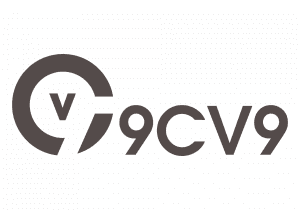









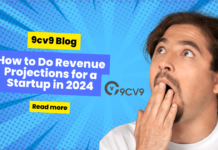
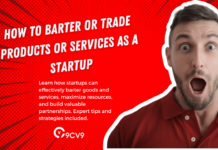


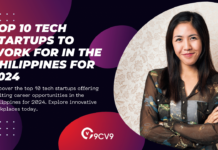
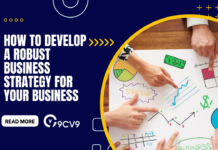
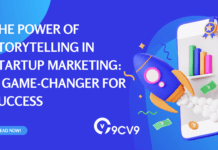
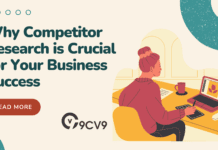
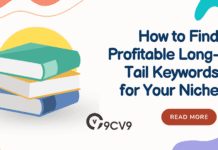



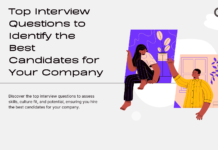
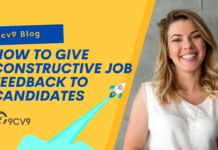

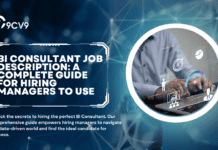





![Writing A Good CV [6 Tips To Improve Your CV] 6 Tips To Improve Your CV](https://blog.9cv9.com/wp-content/uploads/2020/06/2020-06-02-2-100x70.png)


